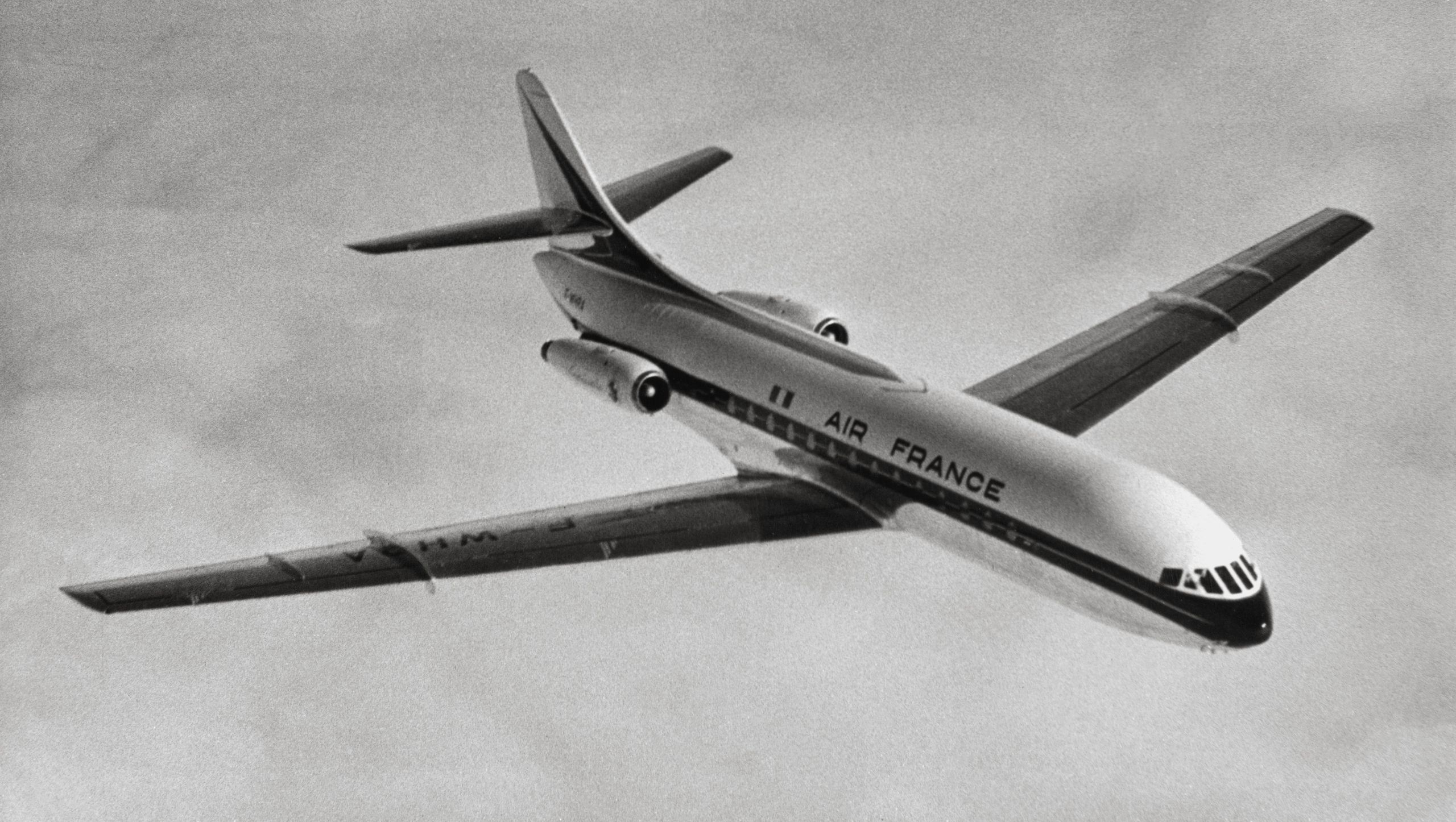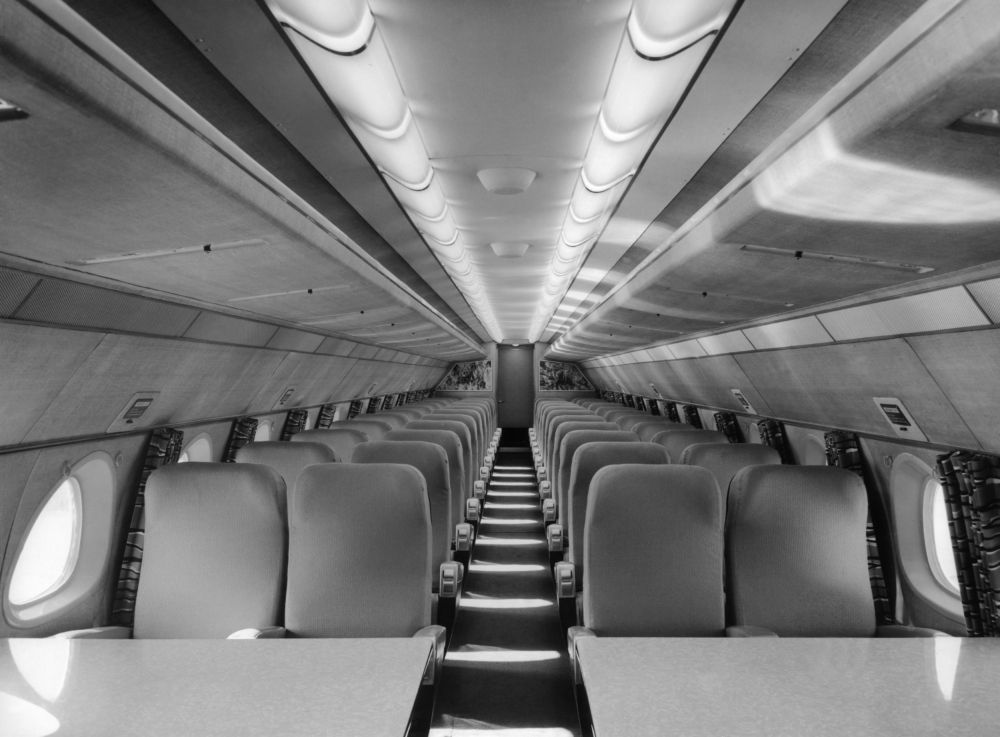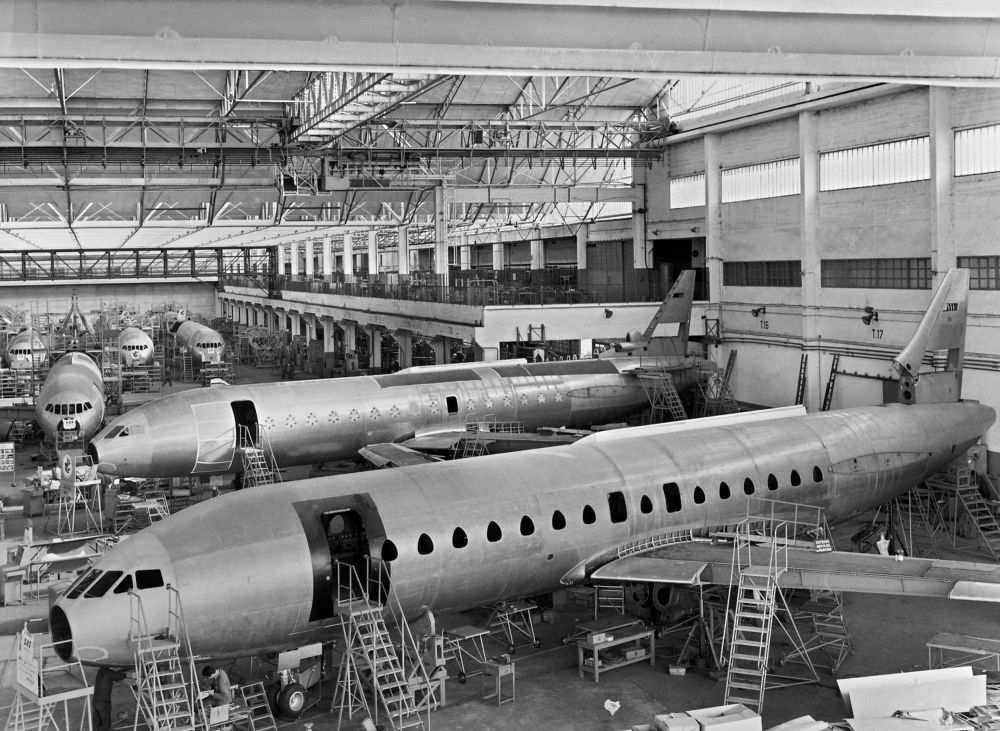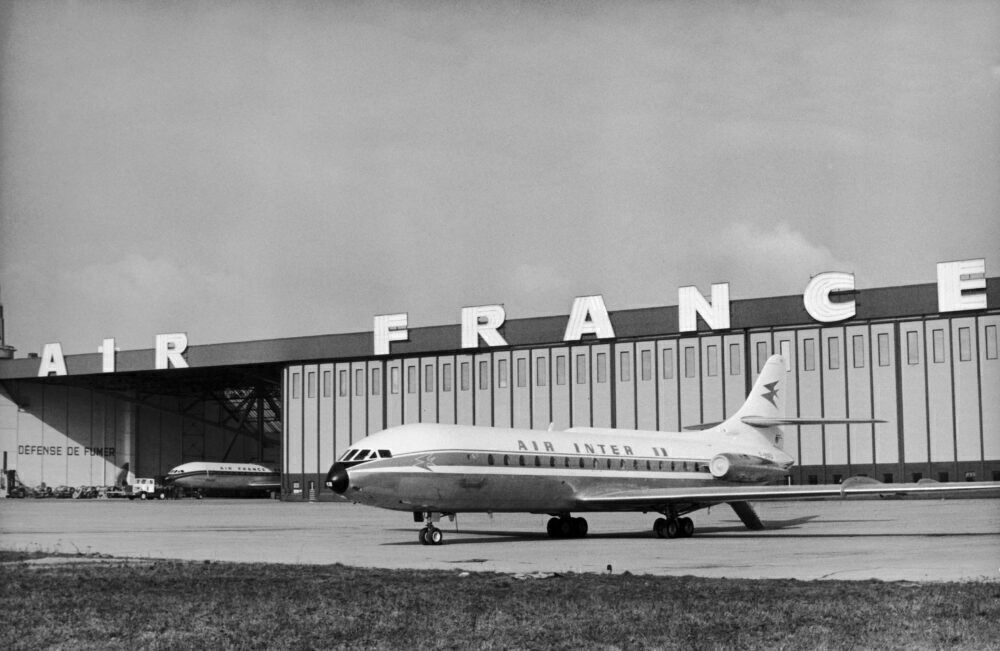The Sud Aviation Caravelle was the first jet airliner to enter production in continental Europe. While this aircraft often goes under the radar, it was one of the groundbreaking planes that pioneered jet aviation in the 1950s.
A new requirement
The SE 210 Caravelle was designed following the French Secretariat General of Commercial and Civil Aviation's need for a transport that can perform at a range between 1,600 km and 2,000 km (865 NM to 1,080 NM). An aircraft with this ability would allow for greater connectivity between France and North Africa.
So, at the beginning of the 1950s, Societe Nationale de Constructions Aeronautiques de Sud-Est (SNCASE), which became Sud Aviation, came up with the idea of a trijet design that was the X120, which had three rear-mounted SNECMA Atar turbojets.
Airliners.net notes that the design was developed to feature a pair of mounted Rolls-Royce Avons. Ultimately, the program pioneered the rear-mounted engine configuration.
Subsequently, the government of France ordered two static and two flying prototypes of aircraft in 1953. Just two years later, on May 27th, 1955, this twinjet type had hit the skies for the first time.
Familiar locations
Marignane, which became a notable Airbus site, played a crucial role in the construction of the Caravelle. For instance, the building of the first 28 equipped nose sections began here in 1955. However, the contribution ran far deeper.
“Production of the engine nacelles, including their titanium and stainless steel air intakes, also started here at the end of 1955. Subsequently, in view of the workload at the Toulouse site, the next section (after the passenger door) was transferred to Marignane. The first fixed plans manufactured at Marignane were then subcontracted to Fiat,” Airbus shares.
“The nose sections of series III and IV, including all their equipment (flight controls, engine controls, instrument panels, hot and cold air conditioning, complete hydraulic system, extinguishers, electricity, radio, soundproofing) were all built in Marignane.”
At the beginning of 1957, 277 workers were supporting the Caravelle’s production. Therefore, most of the workforce was occupied with this program. The Caravelles structures were carried by a special convoy from Marignane to Toulouse approximately once a week.
Entering service
All in all, 282 Caravelles were produced between 1958 and 1972. The first airline to deploy the aircraft was Scandinavian Airlines System (SAS) on April 26th, 1959.
Even though it was SAS that gave the plane its debut, the first airline to order the type was Air France, which flew 54 units and was integral to the testing process. The carrier was a fan of the plane and remained a close partner of those behind it throughout the years.
The flag carrier of France highlights that the SE 210 was renamed Caravelle in reference to Christopher Columbus and his vessels. The operator's first unit, F-BHRA, nicknamed Alsace departed Orly to head to Istanbul via Rome and Athens on May 6th, 1959.
“Air France ordered 12 aircraft in 1956 and integrated it into its fleet in 1959. La Caravelle became the company's spearhead for Europe and the Mediterranean, and the pride of France during the country's "thirty glorious years" (1945-1975),” Air France shares.
“General de Gaulle made it his presidential aircraft in 1958 and all the great stars travelled on it. On the tarmacs, it was easily recognizable with its ovoid windows, rear engines and retractable stairs. Pilots praised its ‘gentle touch’ and its large wings, making it easier to ensure a kiss landing.”
An evolving industry
As Air France highlights, the Caravelle soon got pushed to the side by more efficient solutions that emerged. For instance, the Boeing 727 and 737 became favorites among the industry. Thus, Sud Aviation, which became Aerospatiale, and then Airbus EADS, revised its focus.
One factor that contributed to the decline of the program was the ambition of those behind it. At the turn of the 1960s, Sud Aviation began working on the Super-Caravelle, which was an early design for a supersonic aircraft. However, the work on this project would merge with the British Aircraft Corporation’s efforts to form Concorde.
The Airbus A300 program would also become a prime focus of France’s aviation industry in the years that followed. This factor allowed the likes of Boeing to continue their dominance in the narrowbody market.
Nonetheless, during this shift in focus by Sud Aviation and its successors, the company's aircraft would remain in the skies for years to become. Notably, the Caravelle stayed with Air France up until the 1980s. It would be 2005 for the type to universally retire.
Numerous variants were designed throughout the years. Model I was close to the original prototypes, while III became the most popular edition, with a maximum range of 2,500 km (1,350 NM). There were also stretched designs with the 11R, 10B, and 12. The 110R, 11R, 10B, and 12 variants were equipped with P&W JT8D engines, while the others were primarily fitted with RA-29s.
Stay informed: Sign up for our daily and weekly aviation news digests.
Across the continents
Swissair and Finnair were two other primary users of the Caravelle. Regardless, it could be seen all across the globe. Some of the 100+ airlines that held the plane were Air Algérie, Aerolíneas Argentinas, Austrian Airlines, Lufthansa, TAP Air Portugal, Alitalia, United Airlines, and Tunisair.
Even though the likes of Douglas DC-8, de Havilland Comet, and Boeing 707 take the limelight when it comes to commercial passenger jet innovation, the Caravelle was also a major player in these early days. Moreover, the program helped Sud Aviation on its way to play a critical role in the course of European aviation in the decades that followed.
What are your thoughts about the Sud Aviation Caravelle? How do you feel it compares with the other jets of its time? Let us know what you think of the plane and its achievements in the comment section.




